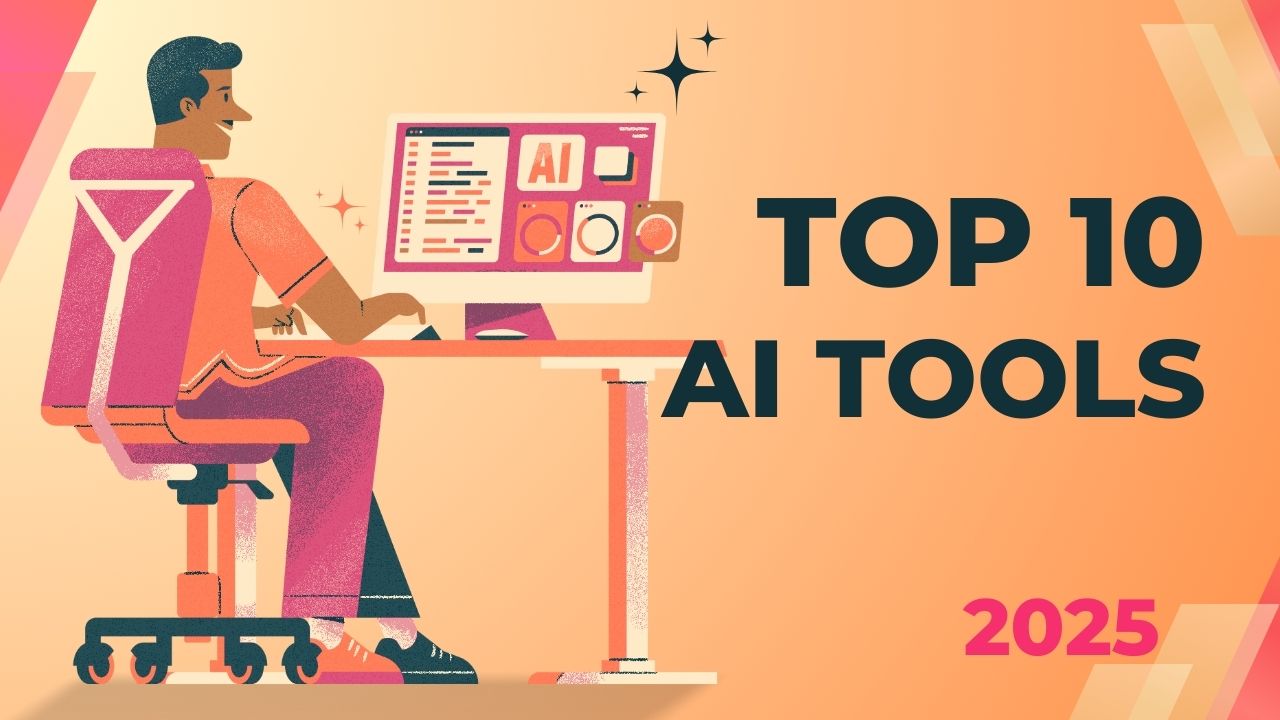Introduction
Artificial Intelligence (AI) is transforming the way businesses and developers operate. From automating customer service to generating high-quality content, AI tools have become essential for efficiency and innovation. Whether you’re a developer, marketer, or business owner, leveraging AI tools can significantly boost productivity.
In this article, we’ll explore the top 10 AI tools in 2025 that are shaping industries and helping businesses thrive.
1. ChatGPT – AI-Powered Chatbot & Content Generator
- Best for: Content creation, chatbots, customer support
- Key Features:
- Generates high-quality text content.
- Can be used for customer support automation.
- Assists in brainstorming and writing blog posts.
Why Use It?
ChatGPT is widely used by businesses to automate responses, generate marketing content, and enhance productivity.
Example: Companies use ChatGPT-powered chatbots for 24/7 customer support and instant responses.
2. Jasper AI – AI Writing Assistant for Marketers
- Best for: Copywriting, SEO content, email marketing
- Key Features:
- Writes engaging blog posts, ads, and social media content.
- Helps improve content readability and tone.
- Provides AI-driven SEO optimization.
Why Use It?
Jasper AI is ideal for content marketers who need high-quality blog posts, sales copies, and email campaigns.
Example: E-commerce businesses use Jasper AI to generate product descriptions and sales emails.
3. DALL·E – AI Image Generation
- Best for: Creating AI-generated images and artwork
- Key Features:
- Generates high-resolution images from text descriptions.
- Useful for graphic designers, content creators, and marketers.
- Can create unique illustrations for websites and ads.
Why Use It?
DALL·E helps businesses create original visual content without needing professional designers.
Example: Bloggers use DALL·E to generate featured images for articles.
4. TensorFlow – AI Framework for Machine Learning
- Best for: Machine learning, deep learning, AI application development
- Key Features:
- Open-source AI framework by Google.
- Supports neural networks and deep learning applications.
- Used for AI-powered automation and analytics.
Why Use It?
TensorFlow is a must-have for developers building AI-powered apps and predictive analytics models.
Example: Tesla uses TensorFlow for self-driving car AI development.
5. OpenAI Codex – AI for Coding & Development
- Best for: Automating code writing, debugging, and software development
- Key Features:
- Converts human instructions into code.
- Supports multiple programming languages.
- Helps developers write efficient and bug-free code.
Why Use It?
Codex speeds up software development by automating code writing and debugging.
Example: Developers use Codex to generate complex algorithms in seconds.
6. Grammarly – AI Writing Assistant
- Best for: Grammar checking, style improvement, plagiarism detection
- Key Features:
- Fixes grammatical errors in real-time.
- Enhances writing clarity and engagement.
- Detects and eliminates plagiarism.
Why Use It?
Grammarly is a must-have for bloggers, content creators, and professionals to improve writing quality.
Example: Businesses use Grammarly for error-free website content and emails.
7. Synthesia – AI Video Creation Tool
- Best for: Creating AI-generated video content
- Key Features:
- Converts text into AI-generated videos.
- Offers realistic AI avatars and voiceovers.
- Ideal for explainer videos, marketing content, and training materials.
Why Use It?
Synthesia eliminates the need for hiring actors or using expensive video production software.
Example: Businesses create AI-powered training videos for employees using Synthesia.
8. Frase.io – AI-Powered SEO & Content Optimization
- Best for: SEO content research, keyword optimization, content briefs
- Key Features:
- Suggests keywords and content improvements.
- Analyzes competitor content for ranking insights.
- Provides AI-generated content outlines.
Why Use It?
Frase.io helps bloggers and businesses write content that ranks higher on Google.
Example: Digital marketers use Frase.io to optimize blogs for higher search engine visibility.
9. IBM Watson – AI for Enterprise & Data Analytics
- Best for: AI-powered business automation and analytics
- Key Features:
- Helps businesses analyze large datasets.
- Assists in automating workflows and decision-making.
- Provides AI-driven insights for better business strategies.
Why Use It?
IBM Watson is ideal for enterprises looking to leverage AI for predictive analytics.
Example: Banks use Watson AI to detect fraud and analyze financial trends.
10. Hugging Face – Open-Source AI Models for Developers
- Best for: Machine learning, AI research, and NLP development
- Key Features:
- Provides access to pre-trained AI models.
- Supports text and language-based AI applications.
- Used by AI researchers and software developers.
Why Use It?
Hugging Face helps developers implement AI models without building them from scratch.
Example: Chatbot developers use Hugging Face’s NLP models to improve chatbot accuracy.
Conclusion
AI tools are reshaping businesses and software development in 2025. Whether you need content automation, cybersecurity solutions, AI-powered marketing, or machine learning tools, these AI platforms provide cutting-edge solutions.
Final Thoughts:
- Businesses can boost efficiency using AI-powered marketing and automation tools.
- Developers can accelerate coding and AI development with OpenAI Codex and TensorFlow.
- Content creators can leverage AI for writing, SEO, and video generation.
By integrating the right AI tools, businesses can stay ahead of the competition and maximize productivity in the evolving digital world. 🚀


